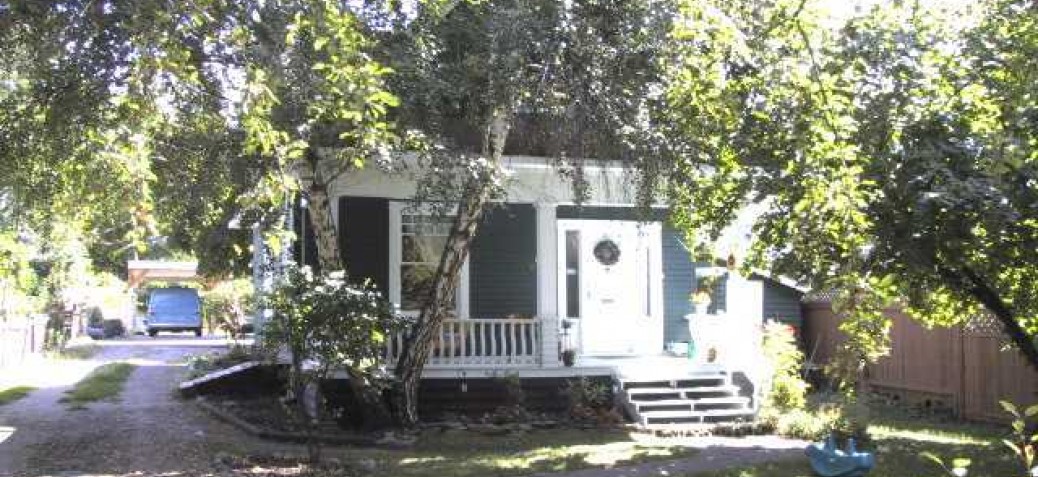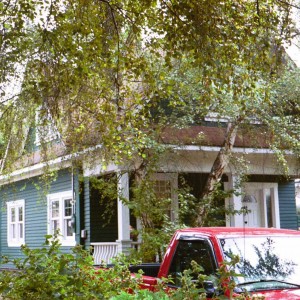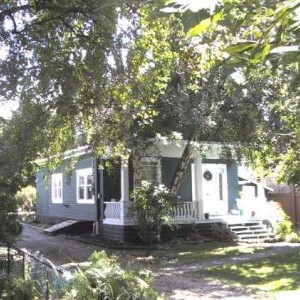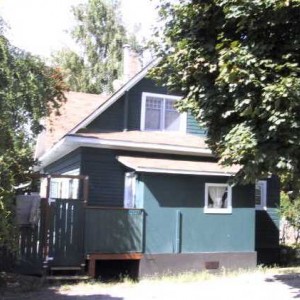2127 Pandosy St
Place Description
The historic place is the one and one-half storey wood house built in 1912 and located at 2127 Pandosy Street in Kelowna's South Central neighbourhood.
Heritage Value
The heritage value of the house at 2127 Pandosy Street is primarily found in its being a very good and largely unaltered gable-front house from the years before WWI. It exemplifies a common house-type built in Kelowna during the initial period of development after incorporation in 1905.
The house was built in 1912. It is modest in size and simple in design. Beneath a full porch, two bays face the street, one of them a door that presumably leads to a side-hall and staircase; the other a window, presumably illuminating the parlour / living room. The doors and windows are finely detailed. The second floor, usually occupied by bedrooms, is tucked within the slope of the gabled roof. This house-type is found throughout British Columbia in the years leading up to the First World War.
The house is listed in the 1912 tax roll as belonging to Thomas Forest, with improvements valued at $1600. The subsequent owners are unknown until the 1940s. Between 1944 and 1968 it had at least seven owners, starting in 1944 with John Loxterkamp. In 1948 it was rented by W.J. Thomson (wife Nancy A.), a sergeant in the Provincial Police, and in 1956 it was owned and occupied by Earl M. Swayze, a salesman with Victory Motors. The house-type and the occupants are both representative of the larger municipal population.
Character Defining Elements
- House is well set back from the street on a medium-sized lot with mature trees, particularly at the street
- Residential form, scale and massing, as expressed by one-and-one-half-storey height and rectangular plan
- Medium-pitch gable roof with prominent gable facing the street
- Front porch, the width of the house, with 3 wood columns with capitals, supporting large painted wood beams; also a curved, decorative wood balustrade with wood handrail
- Corbelled brick chimney
- Horizontal shiplap wood siding
- 8-over-1 and 12-over-1 double-hung wood sash windows and plain, wide wood trim
- Entrance door with a semi-circular transom and narrow sidelights







